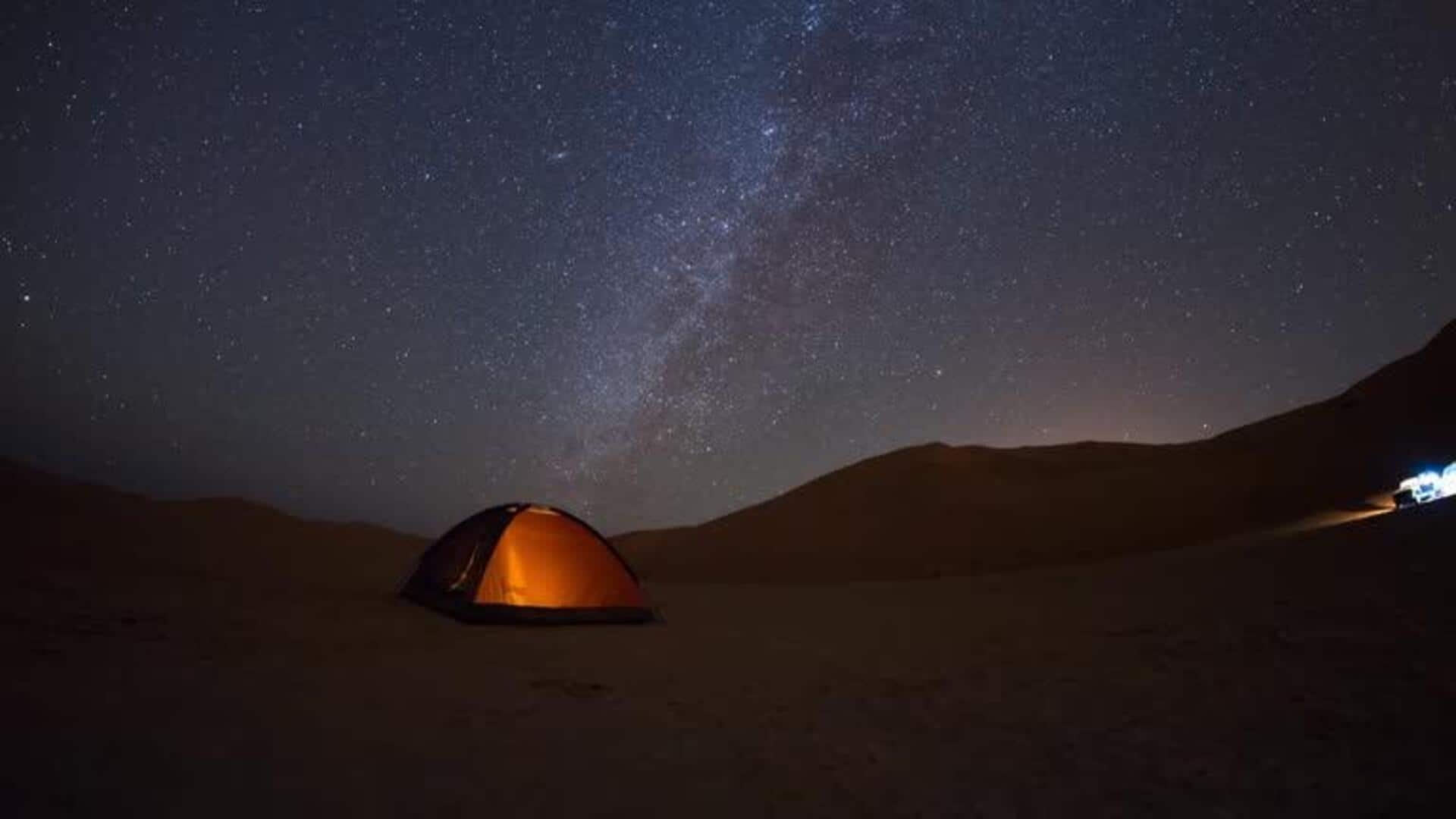
Night camping under Namibia's desert sky: A guide
What's the story
Camping under the expansive Namibian desert sky is a once-in-a-lifetime experience. The crystal-clear, unpolluted skies offer a breathtaking view of the stars, making it an ideal place for stargazing. Here's a look at insights and tips for those planning a night camping trip in Namibia's desert. From knowing the best times to visit to packing essentials, here's your guide to an unforgettable experience under one of the prettiest skies in the world.
Timing
Best time for stargazing
The ideal time to go stargazing in Namibia is during its dry season, which lasts from May to October. The months witness clear skies with little to no cloud cover, making it the perfect opportunity to see stars and constellations. The lack of rain also makes camping more comfortable and accessible. Plan your trip around a new moon phase, when the sky is darkest, making celestial bodies more visible.
Equipment
Essential gear for desert camping
When camping in Namibia's desert, packing right is key. Essentials include a sturdy tent designed for desert conditions, warm sleeping bags (it can get cold at night), and sufficient water supplies (dehydration happens quickly in arid environments). You will need a reliable flashlight or headlamp with extra batteries due to limited light sources at night. Binoculars/telescope can bring distant stars into clearer view.
Safety tips
Navigating desert terrain safely
However, navigating the Namibian desert isn't as easy as it sounds. One must plan carefully and be aware of the potential hazards. Inform someone about your itinerary before heading out and carry a detailed map or GPS device, as mobile signals may not be reliable. Be mindful of wildlife encounters by keeping food securely stored away from tents and maintaining a safe distance from animals if spotted during your stay.
Weather insights
Understanding local weather patterns
Understanding local weather patterns is essential for a comfortable camping experience in Namibia's desert. Daytime temperatures can soar, while nights may be chilly. Dressing in layers helps you deal with these fluctuations. Also, be mindful of sudden sandstorms by having protective eyewear handy. Such precautions ensure your adventure across this vast, beautiful landscape stays enjoyable both day and night.